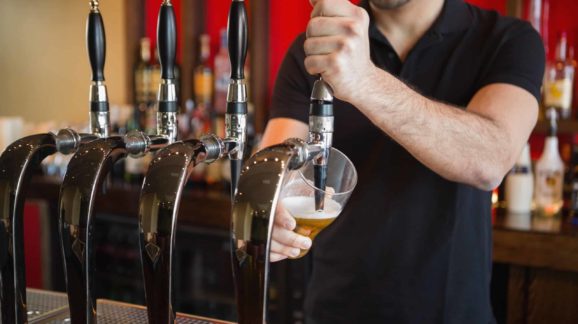Obamacare vs. Beer
Michelle Minton, in an article for Real Clear Policy, discusses the implications a provision in the Affordable Care Act may have on the craft brewing industry, franchises, and consumers.
President Obama likes beer. He drinks it, he brews it, and he's been named the presidential candidate people would most want to have a drink with. However, his signature health-care law might change how we can enjoy a cold one when ordering at restaurants.
A little-known provision within his Affordable Care Act ("Obamacare") requires chain restaurants with 20 or more locations to list calorie information for "standard menu items," including each available beer, on menus and menu boards by December 2016. Testing the nutritional content of a single beer could cost as much as $1,000, according to the Beer Institute, a trade association representing brewers.
Very large brewers producing millions of barrels of the same few brands each year can easily absorb that cost. But smaller brewers with large selections could see costs quickly add up. And it isn't just calories. Other nutritional information, including total carbohydrates, sugars, and proteins, must be made available in writing upon a customer's request.
For a craft brewer, getting a beer onto the menu of a major chain restaurant like TGI Fridays is a huge boost. However, it doesn't make sense for them to test every variety of beer they make, spending many thousands of dollars before they have even made it onto a chain restaurant's menu. Restaurants interested in carrying a craft beer may not want to wait for testing to be done and will move on to beers that already have nutritional information. That means many craft brewers will miss out on an important opportunity to grow their business.
In addition to the cost and lost opportunity for smaller brewers, the ACA labeling requirement threatens to exacerbate regulatory overlap and sow confusion, Paul Gatza, director of the Brewers Association, which represents smaller brewers, told me. The Alcohol and Tobacco Tax and Trade Bureau (TTB) is the agency that normally handles regulation of beer, including labeling, but the ACA menu-labeling rules bring brewers under the FDA's authority. "We would like to see a harmonization of the differences between FDA and TTB in how they handle calories," Gatza said.
The Brewers Association, along with a coalition of other alcohol trade organizations, is asking the FDA for clearer guidance on the new rules. "The FDA allows an exact number of calories for menus and menu boards when the calorie number is on the label, but only allows rounding to the nearest 10-calorie increment if not," said Gatza. This is different from the TTB's requirement, which allows for rounding to the nearest calorie increment. For example, if a restaurant has a beer with 167 calories, they have to list it as having 170 under FDA's menu-labeling law. However, some brewers already have calories listed elsewhere, using the TTB's method of rounding to the nearest calorie. While Gatza admits that the risk is minimal, there is "an opening for these multiple calorie counts for a specific beer and serving size to cause confusion and, theoretically, exposure to a nuisance suit," he said.
The Brewers Association is hoping to work with the FDA to allow for "reasonable tolerances," which functionally means allowing the numbers to fall within a certain range so that brewers can calculate the approximate calories, carbs, sugars, etc., based on the alcohol content of any particular beer. This would allow the Brewers Association to create a database of ranges for brewers to use for each beer style, without the need to go through costly nutritional testing for every beer they make. According to Gatza, "that would be a solution that wouldn't expose the smallest brewers to large expense, tough decisions about whether to stay in chains, or providing inaccurate information."
Unless the FDA provides greater flexibility within the new rules, all of this may add up to increased risks and costs to small brewers. While consumers at chain restaurants will certainly see more information on their menu as a result of the new rule, but they might also notice fewer options when it comes to the selection of beer.
Originally published at Real Clear Policy.
